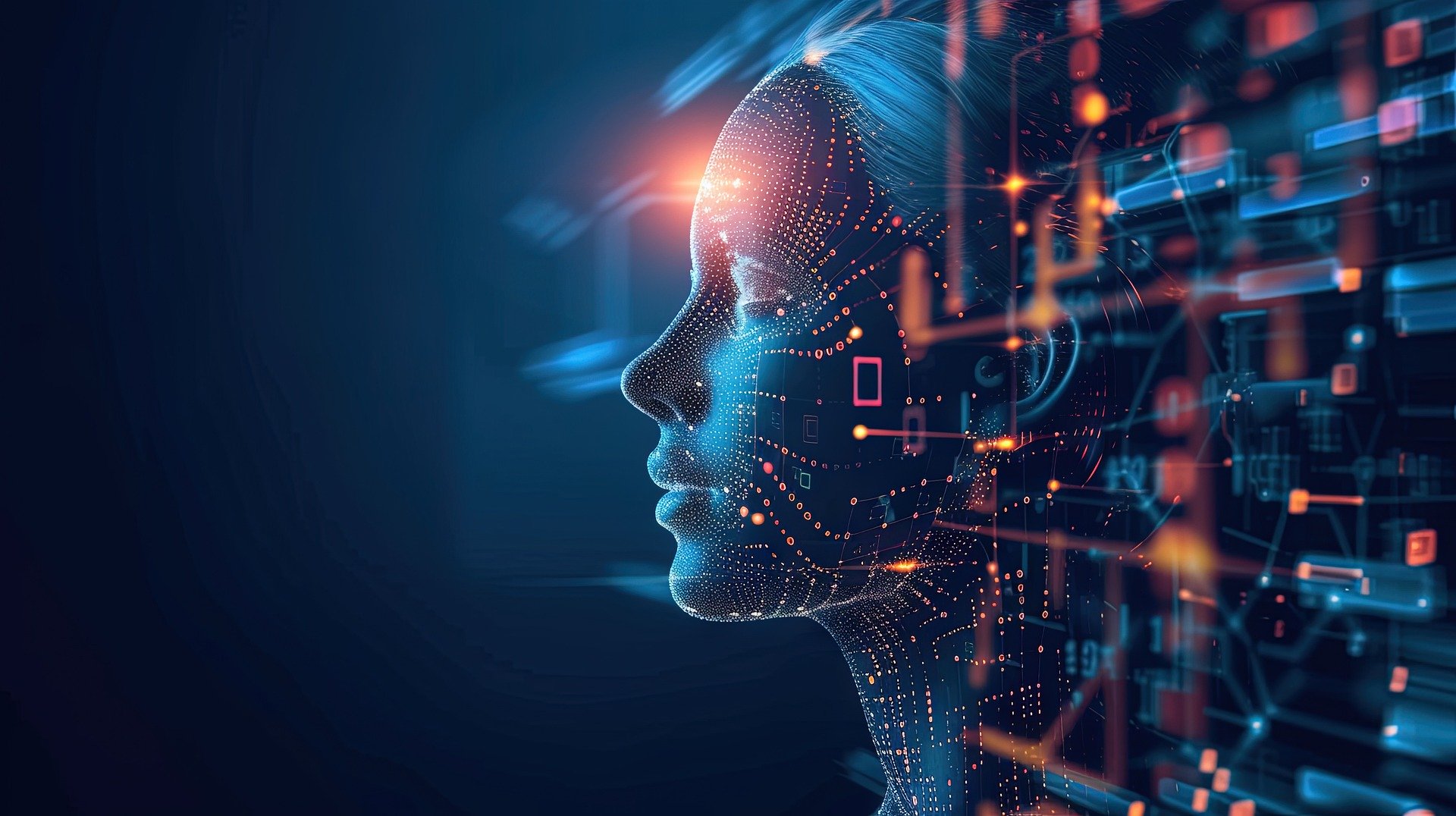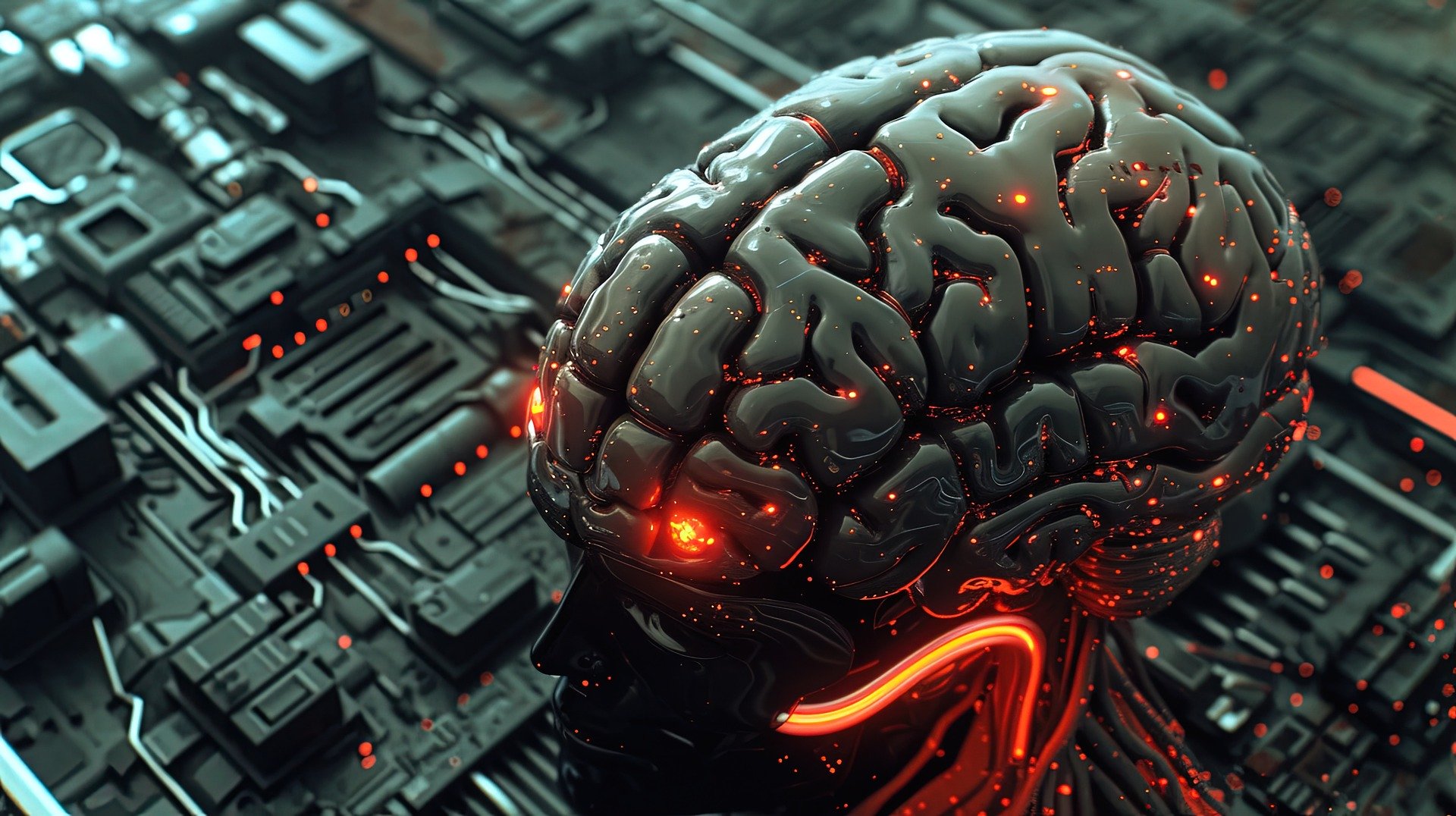
Reflection on Machine Learning
Machine Learning has been a profound catalyst in shaping my journey. It all began with my initial immersion into the world of Machine Learning during my professional career. I was fascinated by the idea that machines could learn from data and make predictions or decisions without being explicitly programmed to do so.
One of the most impactful experiences was when I worked on a project to predict house prices using a dataset from my local community. The project involved cleaning and preprocessing the data, selecting relevant features, training a model, and evaluating its performance. It was a challenging process, but the satisfaction of seeing the model accurately predict prices based on the features was immense.
This project not only deepened my understanding of Machine Learning algorithms but also highlighted the importance of data preprocessing and feature selection. It was a practical lesson that Machine Learning is not just about complex algorithms, but also about understanding the data and the problem at hand.
Machine Learning has also impacted me on a personal level. It has instilled in me a sense of curiosity and a problem-solving mindset. Whenever I come across a problem, I now think about how Machine Learning could be used to solve it. This has made me more analytical and detail-oriented in my approach to problem-solving.
Moreover, Machine Learning has opened up a world of opportunities for me. It has led me to work on diverse projects, from predicting customer churn in telecom companies to detecting fraudulent transactions in financial firms. These experiences have not only enriched my technical skills but also broadened my perspective on how Machine Learning can be applied to various domains.
In conclusion, Machine Learning has had a profound impact on me. It has shaped my professional journey, influenced my career path, and changed my approach to problem-solving. As I continue to explore this fascinating field, I look forward to the new challenges and opportunities that it will bring.

Real-World Applications of Generative AI in Healthcare and Biotechnology
In the dynamic realms of healthcare and biotechnology, innovation knows no bounds. Generative Artificial Intelligence (AI) emerges as a transformative force, reshaping the landscape of medical research, diagnosis, treatment, and drug discovery. In this article, we'll explore the real-world applications of Generative AI and its profound impact on advancing healthcare and biotechnology.
Revolutionizing Medical Imaging:
Generative AI algorithms have revolutionized medical imaging, enhancing the accuracy and efficiency of diagnostic processes. From detecting anomalies in X-rays and MRI scans to reconstructing 3D images from 2D data, Generative AI enables clinicians to make more informed decisions and improve patient outcomes.
Personalized Medicine and Drug Discovery:
Generative AI plays a pivotal role in personalized medicine and drug discovery, tailoring treatment plans and therapies to individual patient needs. By analyzing vast datasets and predicting molecular structures, Generative AI accelerates the drug development process, leading to the discovery of novel treatments for complex diseases.
Advancing Genomics and Proteomics:
In the fields of genomics and proteomics, Generative AI unlocks new insights into the intricate workings of the human body. By generating synthetic DNA sequences and predicting protein structures, Generative AI facilitates genetic research, enabling scientists to unravel the mysteries of disease mechanisms and genetic disorders.
Enhancing Patient Care and Clinical Decision-Making:
Generative AI-powered chatbots and virtual assistants enhance patient care by providing personalized health recommendations, answering medical queries, and offering support to patients and caregivers. Moreover, Generative AI algorithms aid clinicians in clinical decision-making, providing evidence-based insights and treatment recommendations based on patient data and medical literature.
Improving Healthcare Operations and Resource Allocation:
Generative AI optimizes healthcare operations by forecasting patient volumes, predicting disease outbreaks, and optimizing resource allocation. By analyzing healthcare data and predicting patient flow patterns, Generative AI enables hospitals and healthcare systems to streamline workflows, reduce wait times, and improve patient satisfaction.
Ethical Considerations and Regulatory Challenges:
While Generative AI holds immense promise in healthcare and biotechnology, it also presents ethical considerations and regulatory challenges. Issues such as data privacy, algorithmic bias, and transparency must be addressed to ensure responsible deployment and ethical use of Generative AI technologies in healthcare settings.
Looking Ahead:
As we look to the future, the potential of Generative AI in healthcare and biotechnology is limitless. From personalized treatment strategies to novel drug discoveries, Generative AI continues to push the boundaries of medical innovation, transforming the way we diagnose, treat, and prevent diseases.
Join the Healthcare Revolution:
Are you ready to embrace the transformative power of Generative AI in healthcare and biotechnology? Join the revolution and explore the endless possibilities of this groundbreaking technology. Together, we can usher in a new era of medical innovation and improve healthcare outcomes for patients worldwide.

Enhancing User Experience: The Role of Multimodal AI in Human-Computer Interaction
In the digital age, user experience (UX) reigns supreme, dictating the success or failure of digital products and services. As technology evolves, so do user expectations, prompting the need for innovative solutions that seamlessly blend human and machine interaction. Enter Multimodal AI—a groundbreaking technology that revolutionizes human-computer interaction (HCI) by integrating various modalities such as speech, gesture, and vision. In this article, we'll explore the pivotal role of Multimodal AI in enhancing user experience and shaping the future of HCI.
A New Era of Interaction:
Gone are the days of static interfaces and one-dimensional interactions. With Multimodal AI, users can now engage with technology in more intuitive and natural ways. By incorporating speech recognition, gesture detection, facial recognition, and other modalities, Multimodal AI bridges the gap between humans and computers, enabling seamless communication and interaction.
Personalized and Adaptive Interfaces:
One of the key advantages of Multimodal AI lies in its ability to adapt to individual user preferences and behavior. By analyzing user inputs across multiple modalities, Multimodal AI can personalize the user interface in real-time, ensuring a tailored and engaging experience for each user. Whether it's adjusting font sizes based on visual impairments or recommending content based on speech patterns, Multimodal AI enhances accessibility and usability for all users.
Empowering Accessibility and Inclusion:
Multimodal AI plays a crucial role in breaking down barriers and promoting accessibility and inclusion in HCI. By supporting alternative modes of interaction such as voice commands and gesture-based inputs, Multimodal AI empowers users with disabilities to access and interact with digital interfaces more effectively. This inclusivity not only enhances user experience but also fosters a more equitable digital environment for all.
Driving Innovation in Virtual Assistants and Chatbots:
Virtual assistants and chatbots have become ubiquitous in our daily lives, serving as personal assistants, customer support agents, and more. Multimodal AI elevates the capabilities of these AI-driven interfaces by enabling them to understand and respond to a broader range of user inputs. From voice commands and text queries to image recognition and gesture-based interactions, Multimodal AI enhances the conversational and interactive capabilities of virtual assistants and chatbots, making them more responsive and user-friendly.
Ethical Considerations and Responsible Design:
As we embrace the potential of Multimodal AI in HCI, it's essential to consider the ethical implications and ensure responsible design practices. Privacy concerns, data security, and algorithmic bias are just some of the challenges that must be addressed to safeguard user trust and autonomy. By prioritizing transparency, accountability, and user consent, we can harness the power of Multimodal AI to create inclusive, accessible, and empowering user experiences.
Embracing the Future of HCI:
As we look to the future, the role of Multimodal AI in HCI will only continue to expand. From augmented reality interfaces to brain-computer interfaces, the possibilities are limitless. By embracing Multimodal AI, we can unlock new dimensions of interaction and redefine the way humans engage with technology, ultimately enhancing user experience and shaping a more connected and inclusive digital world.
Join the Multimodal Revolution:
Are you ready to embrace the future of HCI with Multimodal AI? Join the revolution and explore the transformative potential of this groundbreaking technology. Together, we can create more intuitive, accessible, and engaging user experiences that empower users and drive innovation in the digital landscape.

From Pixels to Prose: Exploring Multimodal AI in Content Generation
In the digital age, content reigns supreme. From captivating visuals to compelling narratives, content creators are constantly seeking innovative ways to engage their audience. Enter Multimodal AI—a revolutionary technology that goes beyond words, harnessing the power of images, text, and more to create immersive and dynamic content experiences. In this article, we'll embark on a journey to explore the fascinating realm of Multimodal AI and its transformative impact on content generation.
The Evolution of Content Creation:
Gone are the days when content was confined to text-based formats. Today, consumers crave rich, multimedia experiences that captivate their senses and spark their imagination. Multimodal AI emerges as a game-changer, enabling content creators to seamlessly blend images, text, audio, and video to craft compelling narratives and immersive storytelling experiences.
Harnessing the Power of Multimodal AI:
At the heart of Multimodal AI lies the ability to understand and interpret different types of data—be it images, text, or audio—and synthesize them into coherent and contextually relevant content. From generating image captions to crafting personalized product descriptions, Multimodal AI empowers content creators to unleash their creativity and engage audiences in new and exciting ways.
Applications Across Industries:
The applications of Multimodal AI in content generation are vast and varied. In the world of marketing and advertising, brands leverage Multimodal AI to create visually stunning campaigns that resonate with their target audience. In journalism and media, news organizations harness Multimodal AI to enhance storytelling by incorporating multimedia elements into their articles and reports.
Enhancing User Experience:
Multimodal AI isn't just about creating visually appealing content—it's about delivering personalized and immersive experiences that leave a lasting impression on users. By understanding user preferences and behavior, Multimodal AI can tailor content to individual interests, ensuring that each interaction is meaningful and engaging.
Challenges and Opportunities:
While Multimodal AI holds immense promise, it also presents challenges, particularly in areas such as data privacy, bias, and ethical considerations. As we navigate the complexities of this technology, it's essential to prioritize transparency, accountability, and responsible AI practices to ensure that the benefits of Multimodal AI are realized without compromising integrity or trust.
The Future of Content Creation:
As we look to the future, the role of Multimodal AI in content generation will only continue to expand. From virtual reality experiences to interactive storytelling, the possibilities are endless. By embracing Multimodal AI, content creators can unlock new dimensions of creativity and innovation, shaping the future of content in the digital age.
Join the Multimodal Revolution:
Are you ready to embark on a journey into the world of Multimodal AI? Join the revolution and explore the limitless possibilities of content generation. Whether you're a marketer, journalist, or creative visionary, Multimodal AI offers a wealth of opportunities to redefine how we tell stories, share ideas, and connect with audiences in a rapidly evolving digital landscape.

Integrating Tech: The Synergy of ML, AI, Blockchain, and Project Management
In the fast-paced world of technology, innovation knows no bounds. The integration of Machine Learning (ML), Artificial Intelligence (AI), Blockchain, and Project Management is not just a convergence of tools; it's a strategic synergy that drives digital transformation and shapes the future of industries. Join me as we explore the power of integration and the transformative impact it has on businesses worldwide.
The Tech Landscape Evolved:
Gone are the days when technologies operated in isolation. Today, the true power lies in their integration. ML, AI, Blockchain, and Project Management stand at the forefront of this integration, collectively redefining how businesses operate and innovate.
Harnessing Machine Learning and AI:
Machine Learning and Artificial Intelligence are the engines behind intelligent systems. By leveraging ML algorithms and AI capabilities, businesses gain insights from data, automate processes, and make data-driven decisions that drive efficiency and innovation.
Unlocking the Potential of Blockchain:
Blockchain technology promises transparency, security, and trust in digital transactions. By integrating Blockchain into existing systems, businesses can streamline processes, reduce fraud, and revolutionize supply chain management, finance, and beyond.
Strategic Project Management:
Project Management serves as the orchestrator of technological initiatives. With strategic planning, efficient resource allocation, and meticulous execution, Project Management ensures that integration projects are delivered on time, within budget, and aligned with organizational goals.
Driving Innovation Through Integration:
The synergy of ML, AI, Blockchain, and Project Management goes beyond individual capabilities; it's about driving innovation at every level of the organization. By seamlessly integrating these technologies, businesses can create holistic solutions that address complex challenges and capitalize on emerging opportunities.
Real-World Applications:
From predictive maintenance and personalized customer experiences to supply chain optimization and decentralized finance, the applications of integrated technologies are vast and varied. Real-world success stories demonstrate the transformative impact of integration on industries worldwide.
Join the Integration Revolution:
As we navigate the digital landscape, the integration of ML, AI, Blockchain, and Project Management emerges as a driving force of change. Let's embrace this revolution, collaborate on innovative solutions, and shape the future of technology together.

Tech Leader | Proficient in Software Development, Project Management, CCNA, Blockchain, and Machine Learning
In today's ever-evolving tech landscape, being a well-rounded professional is not just an advantage; it's a necessity. As a Tech Leader proficient in Software Development, Project Management, CCNA, Blockchain, and Machine Learning, I am excited to share insights into the unique intersection of these diverse skill sets and their transformative impact on the technological sphere.
The Fusion of Proficiencies:
Navigating the complexities of Software Development, Project Management, CCNA, Blockchain, and Machine Learning simultaneously is no small feat. This article explores how the fusion of these proficiencies creates a powerful synergy, enabling innovative problem-solving and driving efficiency across various tech domains.
Strategic Software Development:
Discover how my expertise in Software Development extends beyond coding. From strategic planning to efficient execution, this article sheds light on how a holistic approach to software development leads to robust, scalable solutions tailored to meet the demands of the digital era.
Project Management Excellence:
Effective Project Management is the backbone of successful tech initiatives. I'll delve into how my skills in Project Management ensure seamless collaboration, timely delivery, and project success, emphasizing the importance of strategic planning and execution.
Networking Prowess with CCNA:
CCNA proficiency isn't just about configuring networks; it's about architecting robust infrastructures. Learn how my networking skills contribute to creating reliable, secure, and high-performance networks, ensuring seamless connectivity in the digital age.
Blockchain: Beyond Cryptocurrencies:
Blockchain's potential extends far beyond cryptocurrencies. This article explores how my expertise in Blockchain transforms industries by ensuring transparent, secure, and decentralized solutions. Discover real-world applications that go beyond the hype.
Machine Learning: The Intelligent Edge:
Machine Learning is the driving force behind intelligent systems. I'll share insights into how my Machine Learning proficiency enriches tech solutions, providing data-driven insights, predictive analytics, and automation to stay ahead in the competitive landscape.
A Call to Tech Innovation:
This article isn't just a testament to my skills but an invitation to join the conversation. As a Tech Leader, I invite you to explore the boundless opportunities that arise from the intersection of Software Development, Project Management, CCNA, Blockchain, and Machine Learning.
Connect, Collaborate, Innovate:
Let's connect and embark on a journey of collaboration and innovation. Share your thoughts on this intersection of tech domains, and let's collectively shape the future of technology.

AI in Action: From Theory to Implementation
Embarking on the journey from theoretical understanding to practical implementation, this article explores the dynamic landscape of Artificial Intelligence (AI) and its real-world applications. Let's delve into the realms where AI transcends the theoretical, making significant strides in industries and transforming the way we approach complex challenges.
The Practical Lens of AI:
While the theoretical underpinnings of AI are crucial, it's the practical application that truly defines its impact. From automating mundane tasks to revolutionizing complex processes, AI is at the forefront of innovation. This article aims to bridge the gap between theory and implementation, shedding light on how businesses can effectively leverage AI for tangible results.
Real-World Deployments:
Drawing from hands-on experiences, let's navigate through projects where AI has proven its mettle. For instance, I help in a project to upgrade the legacy system to up to date architect where the implementation of AI algorithms resulted in increased efficiency, cost savings, and enhanced user experiences.
Key Components of Successful AI Implementation:
Success in AI implementation lies not only in understanding algorithms but in strategic planning and meticulous execution. This article will explore the essential components, from data preparation and model selection to integration into existing workflows, that contribute to the success of AI initiatives.
Navigating Challenges and Celebrating Successes:
AI implementation is not without its challenges. Whether it's addressing ethical considerations, ensuring data privacy, or overcoming technical hurdles, this article aims to provide insights into navigating the complexities of deploying AI solutions. Additionally, we'll celebrate success stories, showcasing how overcoming challenges leads to transformative outcomes.
AI Beyond the Horizon:
As we explore AI in action, we'll also gaze into the future. What trends are shaping the AI landscape? How will advancements in AI impact industries in the years to come? Join me in this exploration of the current state and the exciting future of AI.
Conclusion:
AI is not merely a theoretical concept but a dynamic force transforming industries globally. This article invites you to journey with me from theory to practical implementation, discovering the transformative power of AI in action.
Dive into the practical world of AI with me, and let's explore the limitless possibilities together! Share your thoughts and experiences on how AI has impacted your professional journey.

Demystifying Machine Learning: Applications and Trends
Welcome to the era of Machine Learning (ML), a transformative force revolutionizing industries and reshaping the way we interact with technology. In this article, we'll delve into the practical applications of machine learning and explore the latest trends that are propelling businesses into the future.
The Power of Machine Learning in Action:
Machine Learning isn't just a buzzword; it's a dynamic tool driving real-world transformations. From predictive analytics and recommendation systems to image and speech recognition, ML applications span a wide spectrum. Businesses are harnessing the power of ML to enhance decision-making, automate processes, and gain a competitive edge.
Real-World Success Stories:
Let's step into the realm of practicality. In my journey, I've been fortunate to contribute to projects where machine learning has delivered tangible results. One noteworthy example is healthcare, where ML algorithms significantly improved specific outcome, e.g., accuracy, efficiency and cost-effectiveness.
Emerging Trends in Machine Learning:
Staying ahead in the world of technology means embracing the latest trends. Currently, machine learning is experiencing several noteworthy shifts:
1. Explainable AI: The demand for transparency in AI decision-making is on the rise.
2. Federated Learning: Collaborative model training without centralizing data, ensuring privacy.
3. AI in Edge Computing: ML models are increasingly being deployed on edge devices for faster processing.
Navigating the Machine Learning Landscape:
For businesses looking to integrate machine learning, understanding the landscape is crucial. Start by identifying specific use cases within your industry. Whether it's optimizing supply chain operations, personalizing customer experiences, or predicting market trends, ML offers tailored solutions.
The Intersection of Machine Learning and Other Technologies:
What makes ML even more powerful is its synergy with other cutting-edge technologies. Integrating machine learning with artificial intelligence, blockchain, and project management methodologies creates a holistic approach to problem-solving.
Final Thoughts:
Machine Learning is not just a tool; it's a paradigm shift that opens doors to endless possibilities. As industries continue to evolve, those who harness the potential of ML will stand out in the competitive landscape. Embrace the applications, stay updated on trends, and witness firsthand the transformative impact of machine learning.
Let's embark on this journey of exploration and innovation together! Share your thoughts on how machine learning is shaping your industry, and let's continue demystifying the tech landscape.

Revolutionizing Real Estate: The Power of Blockchain Technology
Blockchain technology is revolutionizing various industries by providing secure and transparent solutions. One industry that can greatly benefit from blockchain technology is the real estate industry. With the help of blockchain, the real estate industry can streamline transactions, reduce fraud, and provide greater transparency.
Real estate transactions are complex and time-consuming, and often involve intermediaries, such as lawyers and brokers. Blockchain technology can eliminate intermediaries, making transactions more efficient and cost-effective. With blockchain, transactions can be executed in a matter of minutes, reducing the time and effort required for traditional real estate transactions.
Another major problem in the real estate industry is fraud. Real estate fraud is a significant problem that costs millions of dollars each year. Blockchain technology can help to reduce fraud by providing a tamper-proof, transparent and secure way of recording transactions. Every transaction is recorded on a blockchain, and once a transaction is recorded, it cannot be altered or deleted. This means that fraudsters cannot manipulate transactions, and the risk of fraudulent activities is greatly reduced.
In addition to fraud prevention, blockchain technology can also help to provide greater transparency in the real estate industry. With the help of blockchain, real estate transactions can be recorded and tracked in a transparent and secure way. This means that all parties involved in a transaction can view the same information, which promotes transparency and trust.
Blockchain technology can also help to make the process of buying and selling real estate more efficient. With the help of blockchain, real estate transactions can be executed in a matter of minutes, and all parties involved in a transaction can view the same information in real-time. This means that buyers and sellers can quickly and easily complete transactions without the need for intermediaries.
In addition to streamlining transactions, blockchain technology can also help to reduce costs. With the help of blockchain, intermediaries can be eliminated, which reduces the costs associated with traditional real estate transactions. This means that buyers and sellers can save money and complete transactions more quickly and efficiently.
Overall, blockchain technology can greatly benefit the real estate industry by providing greater transparency, reducing fraud, streamlining transactions, and reducing costs. While the technology is still relatively new, many real estate companies are already exploring the use of blockchain technology, and the industry is expected to see significant growth in the coming years.
In conclusion, the real estate industry can greatly benefit from the use of blockchain technology. With its ability to provide greater transparency, reduce fraud, streamline transactions, and reduce costs, blockchain technology is poised to revolutionize the way real estate transactions are executed. As the technology continues to mature and gain wider acceptance, we can expect to see significant growth and innovation in the real estate industry.
Laravel 8 Pagination issue on AWS EC2 instance
Hi, I want to share the experience and solution that I found for one of my Laravel 8 projects.
Issue:
The project was working fine on the local environment but after pushing on the live AWS EC2 instance the problem started to occur on pagination. Those results for which the pagination was required the first page was loading perfectly fine, but once click on the second or third page it started to break the application and the page doesn’t load.
Solution:
After hunting down the whole internet and trying different solutions I found one that worked well for me.
First of all, it took me a while to diagnose the actual issue because there was nothing that I can do in the local environment to test or debug it as the whole project was working perfectly fine. Then I came to know that the whole website was loading on the HTTPS while the next pages of the pagination were loading on HTTP which was actually causing this issue.
Then I tried adding the following piece of code in the app/Providers/AppServiceProvider.php to the boot methodpublic function boot()
{
$this->app['request']->server->set('HTTPS','on');
}
Hope it will be helpful for you!
Cheers!